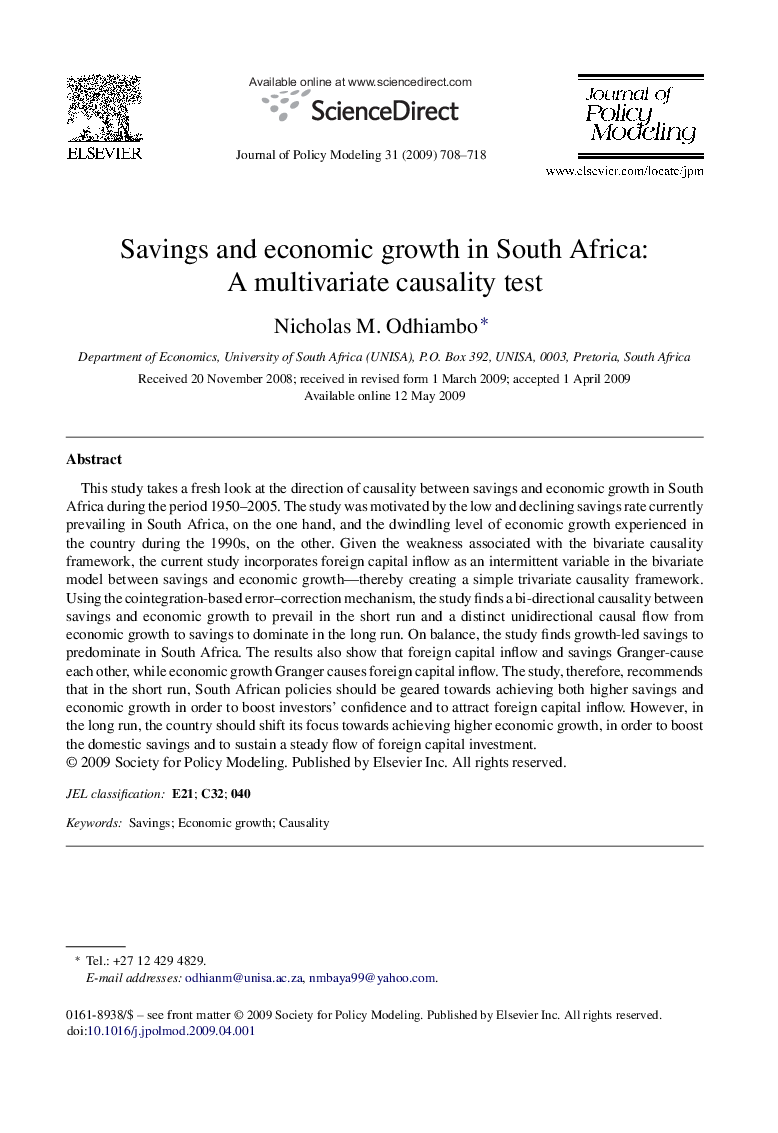| Article ID | Journal | Published Year | Pages | File Type |
|---|---|---|---|---|
| 968086 | Journal of Policy Modeling | 2009 | 11 Pages |
This study takes a fresh look at the direction of causality between savings and economic growth in South Africa during the period 1950–2005. The study was motivated by the low and declining savings rate currently prevailing in South Africa, on the one hand, and the dwindling level of economic growth experienced in the country during the 1990s, on the other. Given the weakness associated with the bivariate causality framework, the current study incorporates foreign capital inflow as an intermittent variable in the bivariate model between savings and economic growth—thereby creating a simple trivariate causality framework. Using the cointegration-based error–correction mechanism, the study finds a bi-directional causality between savings and economic growth to prevail in the short run and a distinct unidirectional causal flow from economic growth to savings to dominate in the long run. On balance, the study finds growth-led savings to predominate in South Africa. The results also show that foreign capital inflow and savings Granger-cause each other, while economic growth Granger causes foreign capital inflow. The study, therefore, recommends that in the short run, South African policies should be geared towards achieving both higher savings and economic growth in order to boost investors’ confidence and to attract foreign capital inflow. However, in the long run, the country should shift its focus towards achieving higher economic growth, in order to boost the domestic savings and to sustain a steady flow of foreign capital investment.
